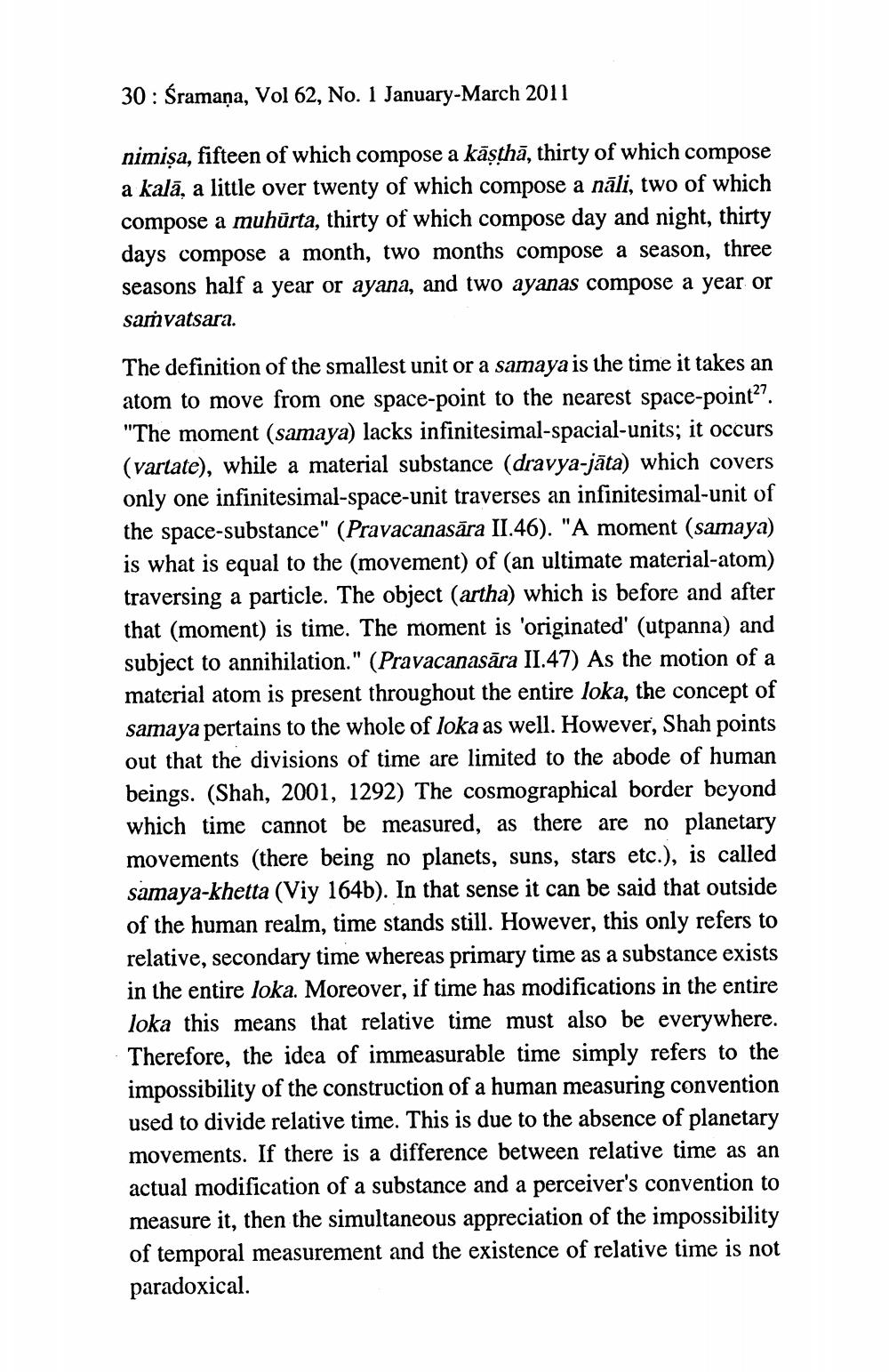________________
30: Śramana, Vol 62, No. 1 January-March 2011
nimișa, fifteen of which compose a kāṣṭhā, thirty of which compose a kalā, a little over twenty of which compose a nāli, two of which compose a muhurta, thirty of which compose day and night, thirty days compose a month, two months compose a season, three seasons half a year or ayana, and two ayanas compose a year or samvatsara.
The definition of the smallest unit or a samaya is the time it takes an atom to move from one space-point to the nearest space-point27. "The moment (samaya) lacks infinitesimal-spacial-units; it occurs (vartate), while a material substance (dravya-jāta) which covers only one infinitesimal-space-unit traverses an infinitesimal-unit of the space-substance" (Pravacanasāra II.46). "A moment (samaya) is what is equal to the (movement) of (an ultimate material-atom) traversing a particle. The object (artha) which is before and after that (moment) is time. The moment is 'originated' (utpanna) and subject to annihilation." (Pravacanasara II.47) As the motion of a material atom is present throughout the entire loka, the concept of samaya pertains to the whole of loka as well. However, Shah points out that the divisions of time are limited to the abode of human beings. (Shah, 2001, 1292) The cosmographical border beyond which time cannot be measured, as there are no planetary movements (there being no planets, suns, stars etc.), is called samaya-khetta (Viy 164b). In that sense it can be said that outside of the human realm, time stands still. However, this only refers to relative, secondary time whereas primary time as a substance exists in the entire loka. Moreover, if time has modifications in the entire loka this means that relative time must also be everywhere. Therefore, the idea of immeasurable time simply refers to the impossibility of the construction of a human measuring convention used to divide relative time. This is due to the absence of planetary movements. If there is a difference between relative time as an actual modification of a substance and a perceiver's convention to measure it, then the simultaneous appreciation of the impossibility of temporal measurement and the existence of relative time is not paradoxical.




